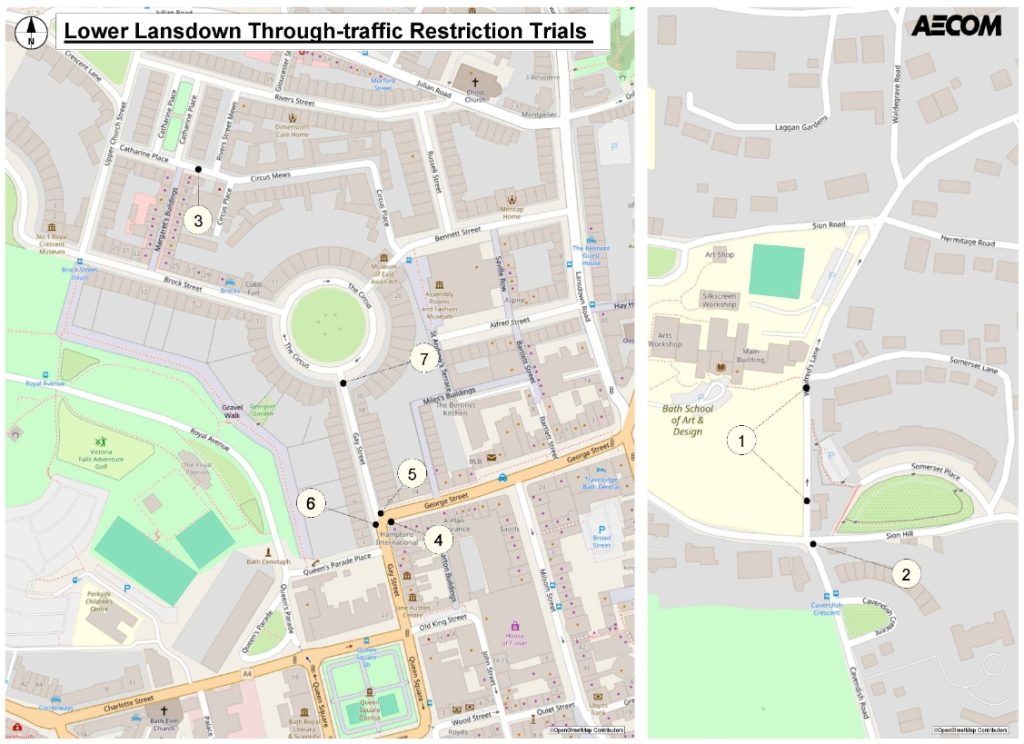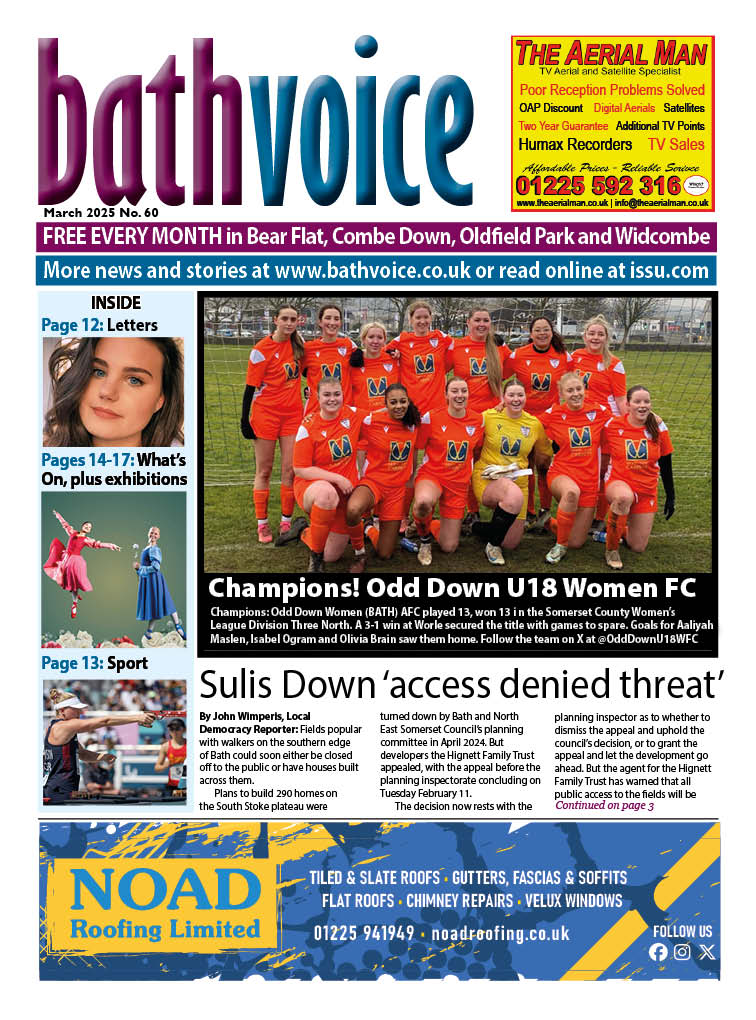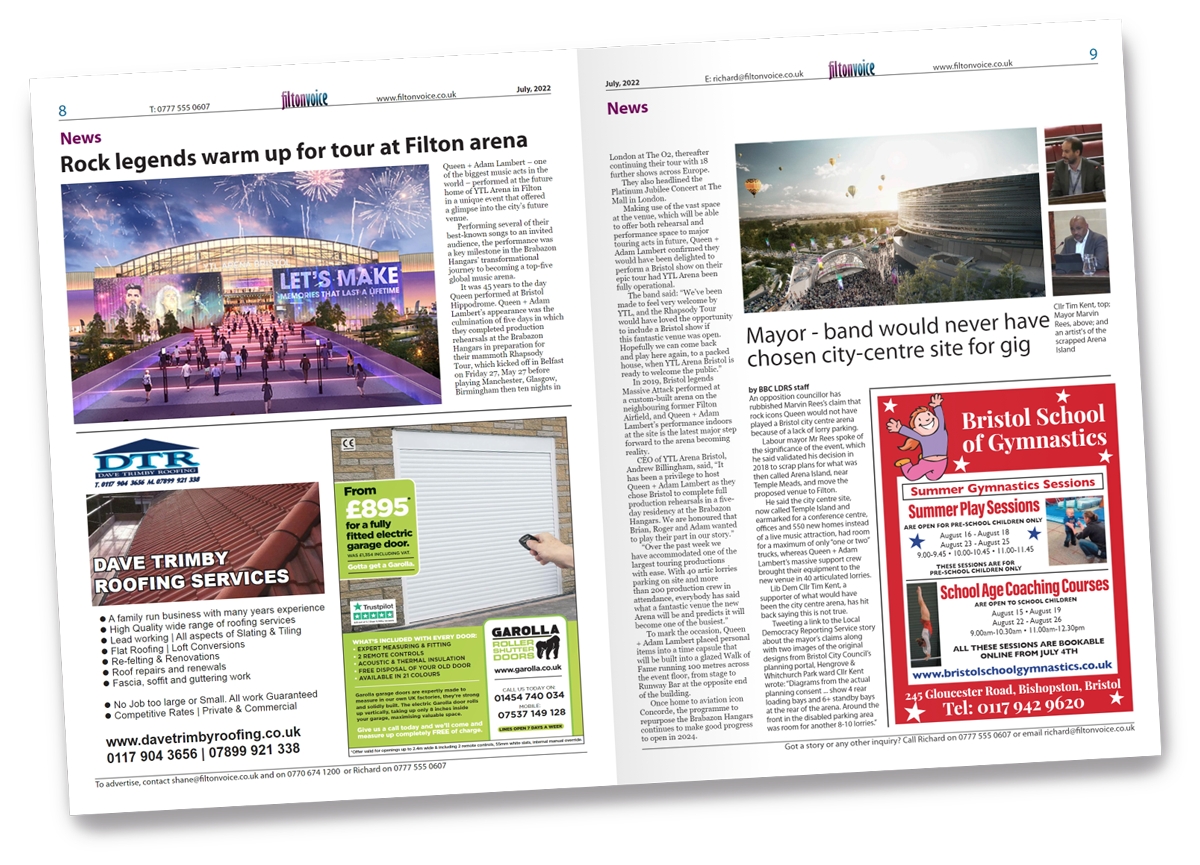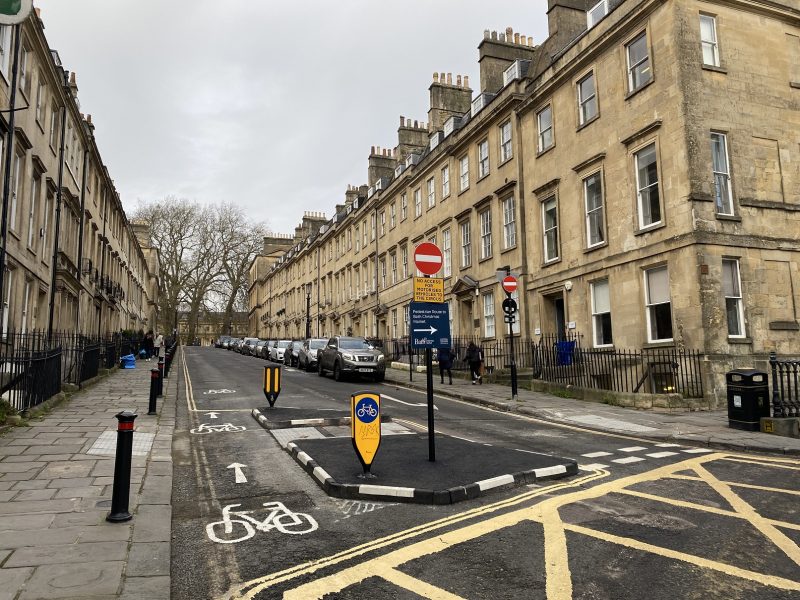By local democracy reporter John Wimperis: There are just hours left to have your say on whether one of the most controversial liveable neighbourhoods in Bath should be made permanent or removed.
In November, Bath and North East Somerset Council overhauled the Gay Street junction and closed Catharine Place and — most controversially — Winifred’s Lane to through traffic to create the Lower Lansdown Liveable Neighbourhood. Liveable neighbourhoods (also called low traffic neighbourhoods, or LTNs) are intended to stop speeding on residential roads and make them safer and more pleasant for walking and cycling.
But locals have warned that closing Winifred’s Lane has done the opposite and pushed 720% more traffic onto a winding road past a primary school. The measures have only been in place for a trial period, with a consultation running alongside. Now there is just one week left to have your say on whether the scheme works before the consultation ends on April 30.
A decision will then be taken later by a council cabinet member on whether to make the scheme permanent. Although the consultation will be taken into account, top councillors have repeatedly stated that consultations are not referendums.

The most recent liveable neighbourhood to be made permanent, on Sydney Road and New Sydney Place, was approved despite 76% of the people who responded to the consultation opposing the scheme. Council cabinet member for resources Mark Elliott, who approved the scheme, said at the time: “We recognise that people have different views on this but we always take a balanced view by considering objections alongside the specific evidence of what is actually happening, the overall aims of the scheme and our own policies on active and sustainable travel.”
When it comes to Winifred’s Lane, campaigners opposed to the scheme commissioned their own independent assessor Smart Transport Hub to gather the data on the impact of closing the narrow northbound road. The data, gathered across a week and weekend in March, said that traffic now going north up the lower part of Sion Road past the exit of Kingswood Junior and Nursery School has increased from 116 vehicles per day before the trial to an average of 951 — an increase of 720%.
The Heart of Lansdown Conservation Group, who commissioned the data and had previously led a successful legal challenge which delayed the trial, said: “These figures are significant and extremely concerning, not least in terms of safety for school children, pedestrians and cyclists. The facts show unequivocally that more traffic now goes past junior schools and nurseries and onto heavily residential streets, which are unclassified and include roads within the proposed LTN itself.”
Manda Rigby, Bath and North East Somerset Council’s cabinet member for highways, insisted: “Safety is always our first priority in any proposed new road scheme.”
She said: “The council is gathering data at a variety of places and both in school time and in school holidays to get the widest possible evidence base. Council decision-making can only consider data gathered by approved providers to ensure it is compliant with guidance and is impartial.
“We continue to listen to all residents but we are not able to include data put forward from private studies such as the Heart of Lansdown Conservation Group. No decision will be made on whether to make the trials permanent until we have considered all the outcomes following this consultation which runs until April 30, including gathering monitoring data.”
You can find out more about the Lower Lansdown Liveable Neighbourhood and respond to the consultation on the council website here: https://www.bathnes.gov.uk/lansdownetro

Bath Voice and Local Democracy Reporters
The journalists are funded by the BBC as part of its latest Charter commitment, but are employed by regional news organisations. A total of 165 reporters are allocated to news organisations in England, Scotland, Wales and Northern Ireland including Bath Voice. These organisations range from television and radio stations to online media companies and established regional newspaper groups. Local Democracy Reporters cover top-tier local authorities, second-tier local authorities and other public service organisations.
Bath Voice Monthly Newspaper is distributed free to thousands of homes and some supermarkets – distributed from the first of the month. Harry Mottram is the News Editor
Email him at news@bathvoice.co.uk Bath website: https://bathvoice.co.uk/news/
Bath Facebook: https://tinyurl.com/bdtf2kep Also on Twitter: https://twitter.com/bath_voice Read the newspaper online at :https://issuu.com/bathvoice
To advertise to thousands of Bathonians call Shaun on 07540 383870 or email him on sales@bathvoice.co.uk
Harry Mottram is a freelance journalist. Follow him on Facebook, LinkedIn, Twitter, Instagram, YouTube, Pinterest, Telegram, TikTok and Email:harryfmottram@gmail.com
Website: www.harrymottram.co.uk


